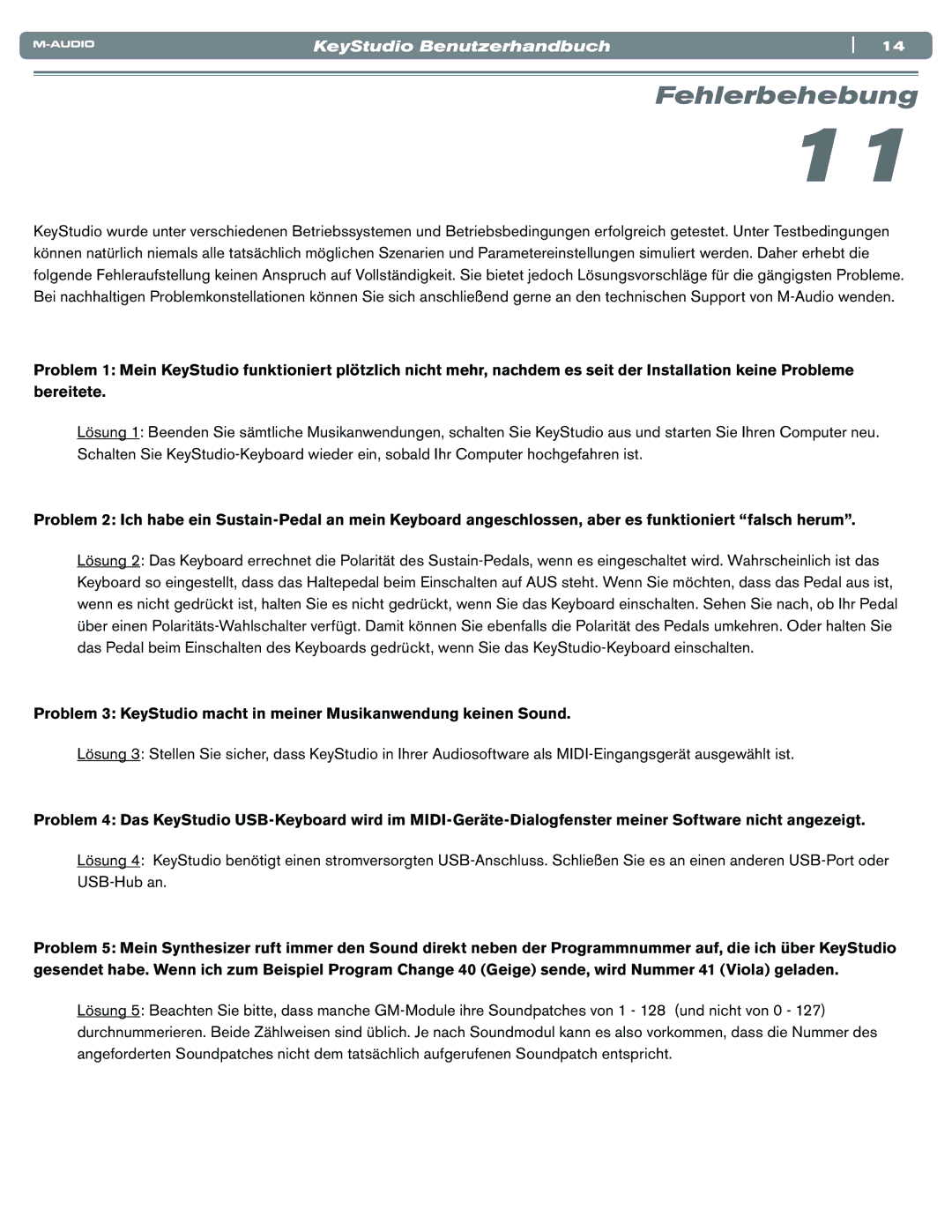Electronic Keyboard specifications
The M-Audio Electronic Keyboard is a versatile instrument designed to cater to both beginners and experienced musicians. Known for its blend of affordability and professional features, M-Audio keyboards are a popular choice among music producers, composers, and performers alike.One of the standout features of M-Audio keyboards is their responsive keybed. Many models come equipped with velocity-sensitive keys that mimic the feel of an acoustic piano, allowing for expressive playing. This sensitivity is crucial for dynamics in performance, enabling users to achieve a wide range of sounds from soft, delicate passages to powerful, commanding sections.
M-Audio keyboards often include a range of built-in sounds and MIDI capabilities. Users can access a vast library of sounds including pianos, strings, brass, synthesizers, and more. Some models offer customizable sound settings, allowing musicians to tweak parameters to create a signature sound of their own. This flexibility is essential for songwriters and arrangers who wish to experiment with different tones and textures.
The incorporation of advanced technologies is another hallmark of M-Audio keyboards. Many models feature USB connectivity, which facilitates easy integration with computers and digital audio workstations (DAWs). This allows musicians to record, edit, and produce their music with relative ease. Additionally, some keyboards come with bundled software, offering users access to popular DAWs and plugins that enhance music production capabilities.
Another key characteristic is portability. M-Audio designs their keyboards to be lightweight and compact, making them ideal for traveling musicians or those with limited studio space. Despite their smaller footprint, these keyboards do not sacrifice functionality, often including pitch bend wheels, mod wheels, and assignable pads for enhancing performance control.
Players will also appreciate the integration of MIDI controller features. This allows the keyboard to control other MIDI-compatible devices, such as synthesizers or drum machines, making it a powerful tool for live performances and studio sessions.
Furthermore, the user-friendly interface of M-Audio keyboards ensures that musicians can quickly learn to navigate their features without extensive technical knowledge. The presets and intuitive layout make it easy for anyone to start creating music right away.
In summary, the M-Audio Electronic Keyboard stands out for its responsive keybed, built-in sounds, MIDI capabilities, portability, and user-friendly design. Whether you are a novice exploring the world of music or a seasoned musician looking for a reliable tool, M-Audio keyboards offer a promising combination of performance and functionality, making music creation both accessible and enjoyable.
